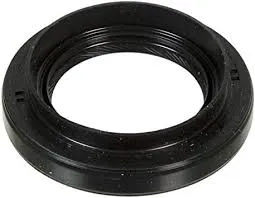8 月 . 10, 2024 12:45 Back to list
Choosing the Right Spark Plugs for Your Motorcycle Performance and Maintenance Needs
Understanding Motorcycle Spark Plugs The Heart of Your Engine
When it comes to motorcycle maintenance, one often overlooked component is the spark plug. Despite their small size, spark plugs play a crucial role in the overall performance of your motorcycle. Understanding how they function, why they’re so important, and how to choose and maintain them can significantly influence your riding experience.
What is a Spark Plug?
A spark plug is a device that ignites the air-fuel mixture in the engine's combustion chamber. It does this by producing a spark at precisely the right moment, ensuring that the engine runs efficiently. Motorcycle engines typically operate at high RPMs, making the spark plug's role even more vital in delivering consistent power and performance.
How Do Spark Plugs Work?
The function of a spark plug may seem relatively simple, but it involves several complex processes. When the engine draws in a mixture of fuel and air, the spark plug generates a high-voltage spark that ignites this mixture. This explosion pushes the piston down, creating the power that propels the motorcycle forward.
The design of spark plugs is also critical to their operation. Each plug consists of a central electrode, an insulator, and a ground electrode. The gap between the electrodes is where the spark occurs. If the gap is too wide or too narrow, the spark may not ignite the mixture effectively, leading to poor engine performance or misfires.
Importance of Spark Plugs
Spark plugs are essential for three main reasons performance, fuel efficiency, and emissions control.
1. Performance A properly functioning spark plug contributes to smooth acceleration and optimal power output. As plugs wear out, they can cause a drop in engine performance, leading to sluggishness and hesitation during acceleration.
motorbike spark plugs

2. Fuel Efficiency Worn or fouled spark plugs can cause incomplete combustion, which forces the engine to work harder and consume more fuel. Regularly inspecting and replacing spark plugs ensures that your motorcycle remains fuel-efficient.
3. Emissions Control With growing environmental concerns, having clean-burning engines is more important than ever. Faulty spark plugs can lead to increased emissions, making regular maintenance essential not just for performance, but also for environmental responsibility.
Choosing the Right Spark Plugs
When it comes to selecting spark plugs, there are several factors to consider. First, always refer to your motorcycle's owner manual for the manufacturer's recommendations. Not all spark plugs are created equal. Different engines require specific types based on heat range, electrode material, and design.
Common materials include copper, platinum, and iridium. Copper plugs offer excellent conductivity but have a shorter lifespan, while platinum and iridium plugs last longer and are more resistant to wear but come at a higher price. It’s also worth considering the intended use of your motorcycle. If you’re a performance rider, you may opt for high-performance plugs that provide better ignition.
Maintenance and Replacement
Regular maintenance is key to keeping your spark plugs functioning optimally. It's recommended to check your plugs every few thousand miles. Signs that it's time to replace your spark plugs include difficulty starting the engine, poor acceleration, or a drop in fuel economy.
Cleaning or replacing spark plugs is usually a straightforward process, but if you're unsure, consult a mechanic to avoid potential damage to your engine.
Conclusion
In conclusion, spark plugs are vital components that significantly affect your motorcycle's performance, fuel efficiency, and emissions. Understanding their functionality and maintenance can lead to a smoother, more efficient ride. Whether you’re a casual rider or a performance enthusiast, taking care of your spark plugs is essential for enjoying the full potential of your motorcycle.